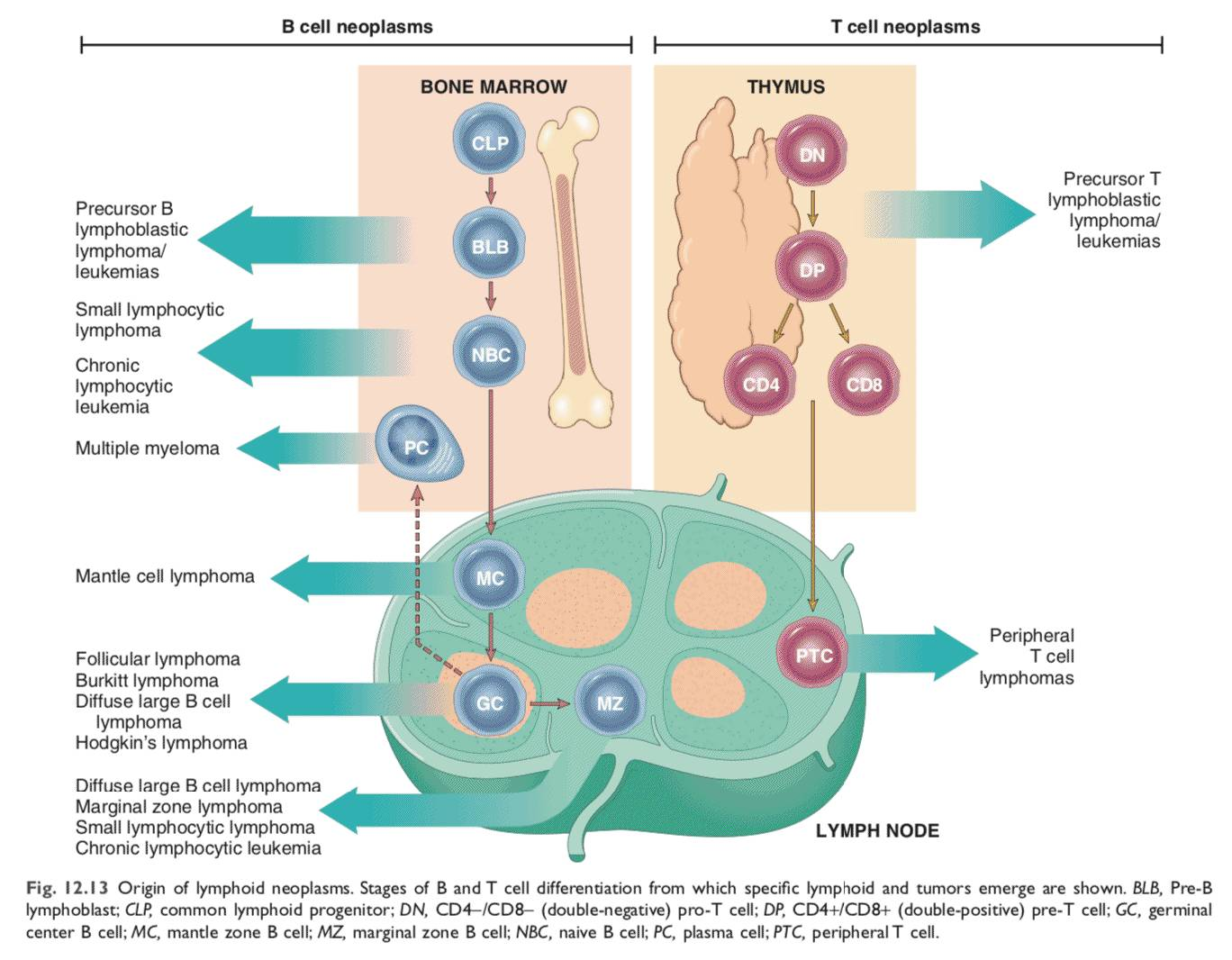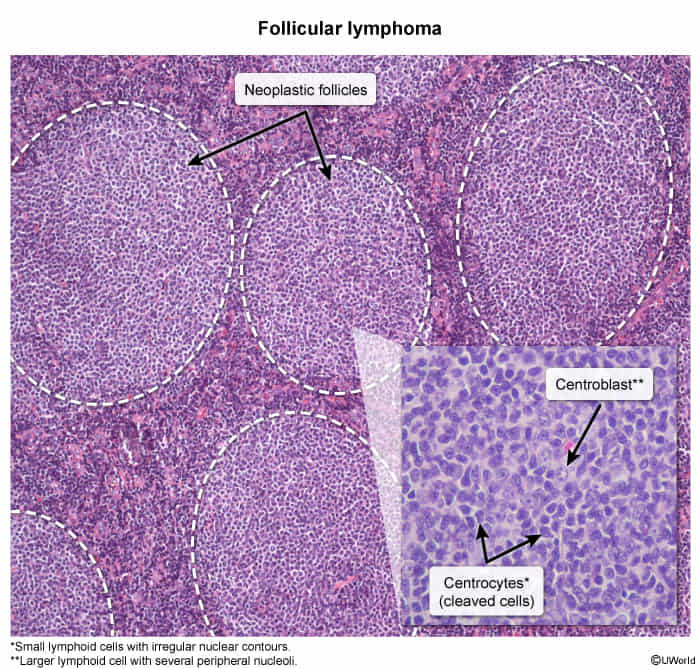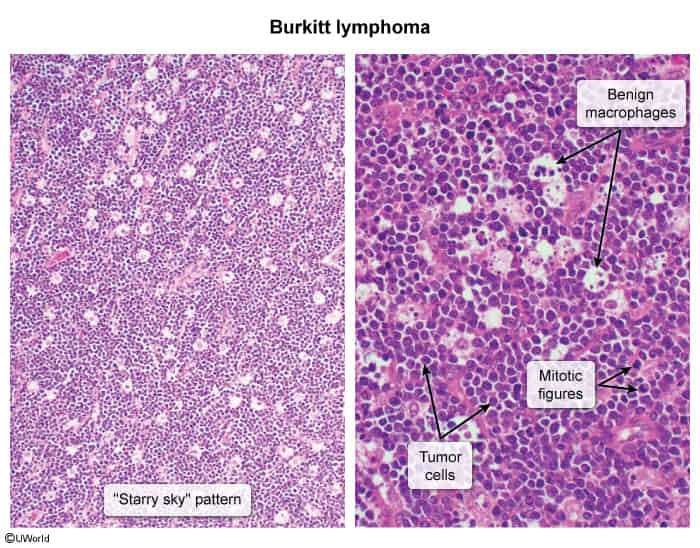Non-Hodgkin lymphomas
Epidemiology
Etiology
Pathophysiology

Clinical features
Indolent (low-grade)
- Follicular lymphoma
- Most common low-grade lymphoma in adults
- Slowly progressive and painless course with an alternating (waxing and waning) pattern of lymphadenopathy and splenomegaly
- Translocation t(14;18), which involves the heavy-chain Ig (chromosome 14) and Bcl-2 gene (chromosome 18) → overexpression of Bcl-2 → dysregulation of apoptosis (normally inhibited by Bcl-2)
- Centrocyte: nodular, small cells with cleaved nuclei

Aggressive (high-grade)
- Burkitt lymphoma
- Most common in children
- Translocation t(8;14) in 75% of cases: reciprocal translocation involving the c-myc gene (chromosome 8) and heavy-chain Ig locus (chromosome 14) → overactivation of c-myc proto-oncogene → activation of transcription
- Forms
- Sporadic: typically located in the abdomen or pelvis
- Endemic: associated with EBV (most prevalent in equatorial Africa and South America) and is typically located in the maxillary and mandibular bones
- Immunodeficiency-associated: e.g. HIV infection
- Starry sky pattern (See below)
- Nonendemic BL often involves the gastrointestinal tract, which can present as an enlarging abdominal mass with ascites (due to lymph obstruction) and distention and obstruction.
Diagnostics
Tip
Lymphoma arises from mature lymphocytes and often forms tumors in the lymphatic system, leukemia typically originates from immature progenitor cells in the bone marrow and is characterized by abnormal cells circulating in the blood.
Chromosomal translocations
| Malignancy | Pathogenesis |
|---|---|
| Acute promyelocytic leukemia | t(15;17) involving PML & RARA → PML-RARα oncoprotein → myeloid differentiation inhibited RARα: nuclear receptor involved in myeloid differentiation PML: fusion forms receptor with dominant negative activity |
| Burkitt lymphoma | t(8;14) involving MYC & IGH → MYC overexpression → cell growth MYC: transcription factor regulating cell growth IGH: immunoglobulin heavy chain (high expression in B cells) |
| Chronic myeloid leukemia | t(9;22) involving ABL1 & BCR → BCR-ABL1 oncoprotein → cell proliferation ABL1: nonreceptor tyrosine kinase BCR: fusion leads to activation |
| Follicular lymphoma | t(14;18) involving IGH & BCL2 → BCL2 overexpression → apoptosis evasion BCL2: antiapoptotic protein |
| Mantle cell lymphoma | t(11;14) involving CCND1 & IGH → cyclin D1 overexpression → cell cycle progression Cyclin D1: regulates cell cycle progression |
Pathology
- Burkitt lymphoma
- Starry sky pattern

- Microscopic finding that resembles a starry sky
- Tingible body macrophages (containing many phagocytized tumor cells) are scattered diffusely within a sheet of uniform neoplastic cells (lymphocytes).
- Starry sky pattern
Treatment
Specific regimens
- Hairy cell leukemia
- Chemotherapy with cladribine or pentostatin